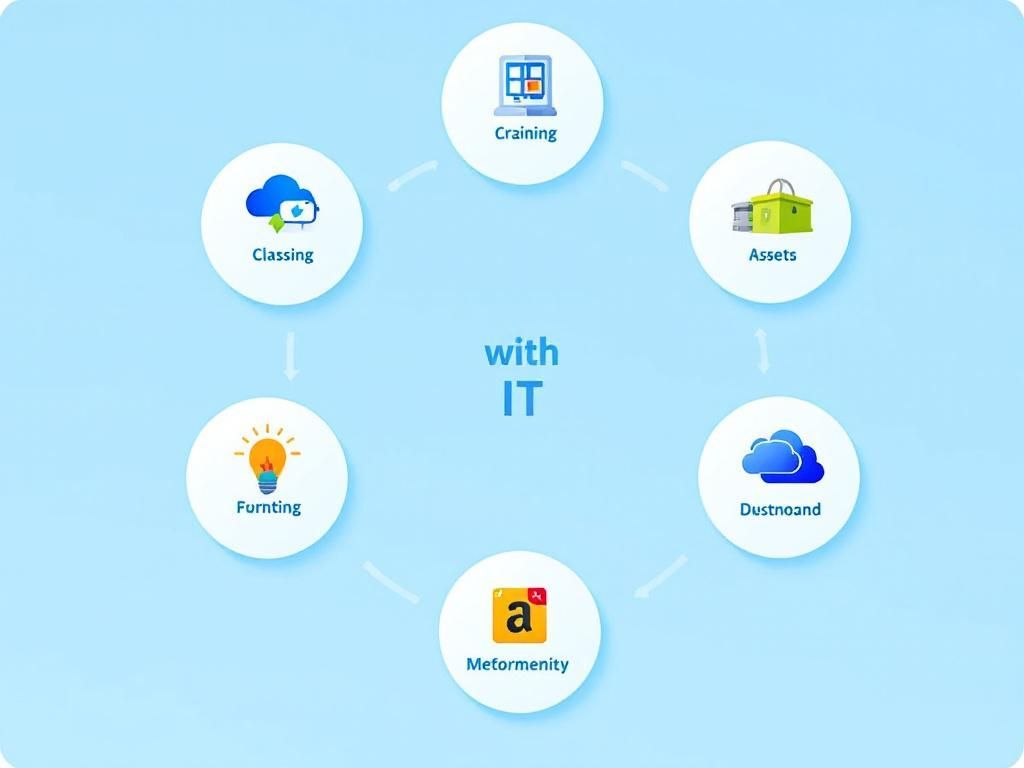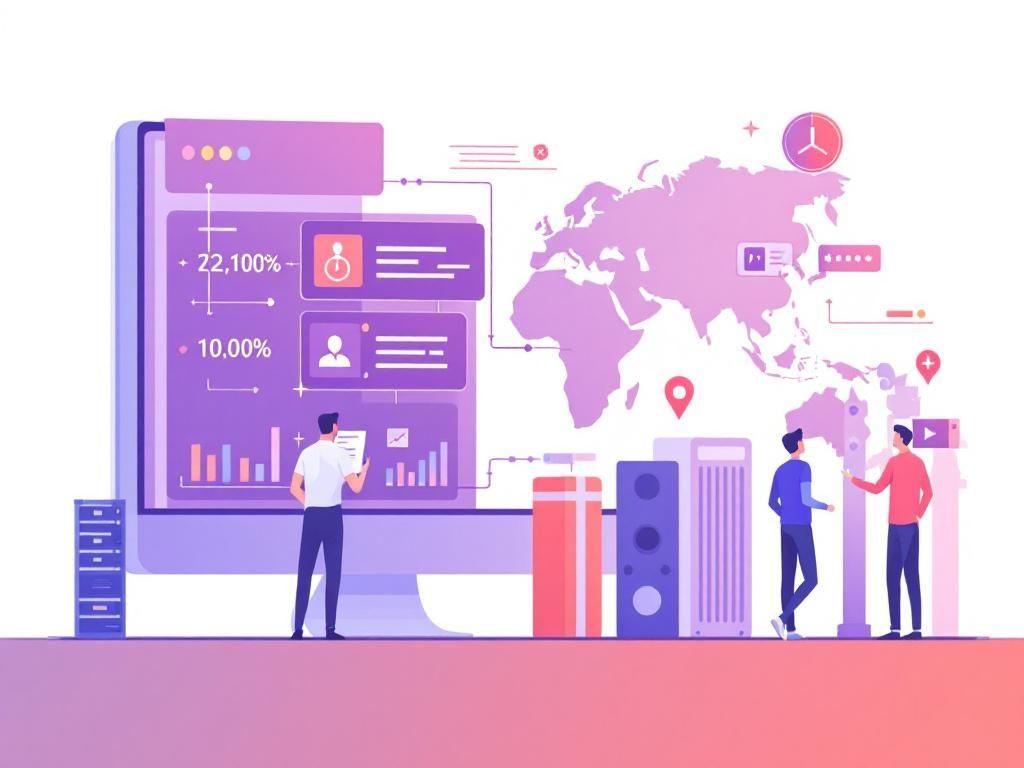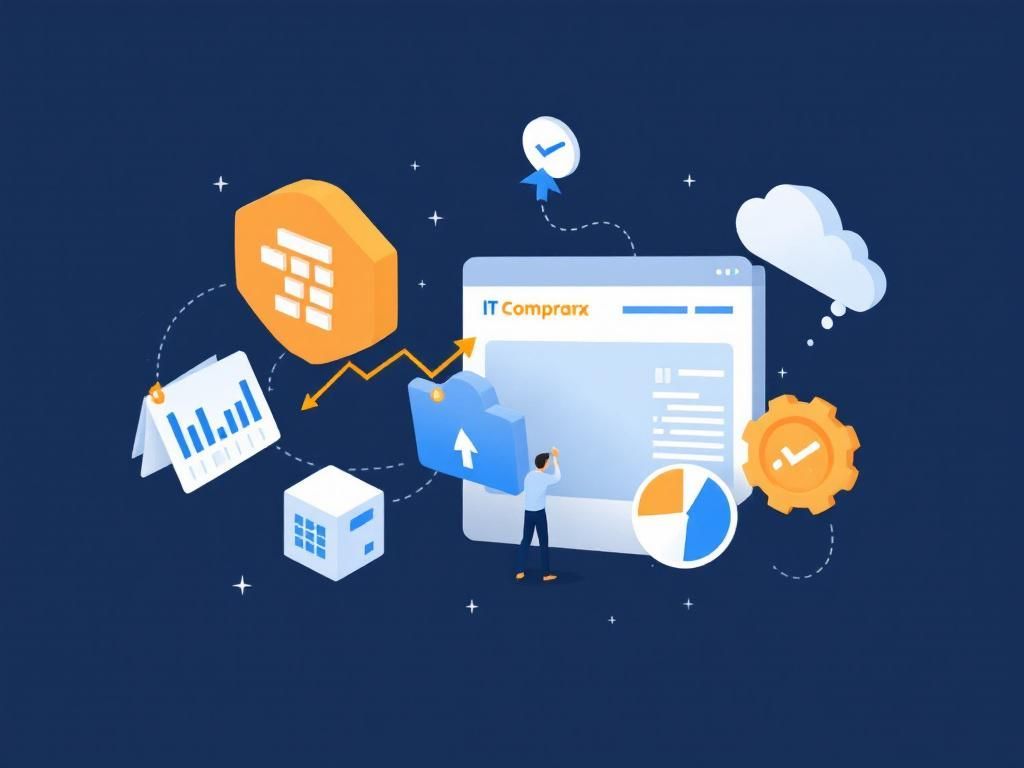Maximizing IT Cost Savings for Medium Enterprises in 2025
Discover effective strategies for medium enterprises to achieve significant IT cost savings in 2025 and enhance operational efficiency.

Table of Contents
2025 IT Cost Savings for Medium Enterprises
In the dynamic landscape of information technology, medium enterprises are continually seeking ways to optimize costs while maintaining efficiency and competitive advantage. As we move into 2025, the strategies and technologies that can lead to significant IT cost savings are more critical than ever. In this article, we will explore various approaches medium enterprises can adopt to realize substantial IT cost savings in the year ahead.
Understanding IT Cost Structure
Before diving into cost-saving strategies, it’s essential to understand the typical components of IT costs, which may include:
- Hardware Costs
- Software Licensing Fees
- Cloud Services and Infrastructure
- IT Personnel Salaries and Benefits
- Maintenance and Support Services
- Training and Development
A comprehensive analysis of these costs will help organizations identify areas where savings can be realized.
1. Embrace Cloud Computing
Cloud computing continues to revolutionize the way medium enterprises operate. By migrating to cloud services, businesses can avoid the hefty upfront costs of hardware and infrastructure. Here are some benefits of cloud computing:
| Benefit | Description |
|---|---|
| Reduced Capital Expenditure | No need for physical servers and infrastructure, which require significant investment. |
| Scalability | Easy to scale resources up or down based on current needs. |
| Pay-As-You-Go Pricing | Only pay for the resources used, which can lead to more predictable budgeting. |
| Disaster Recovery | Enhanced data backup and recovery options without additional costs. |
Medium enterprises can significantly cut costs by only paying for the services they use and by reducing hardware maintenance expenses.
2. Optimize Software Licensing
Software licensing can represent a substantial portion of IT expenses for medium enterprises. To minimize costs, consider the following strategies:
- Conduct a Software Audit: Regularly review and optimize software usage to eliminate unneeded licenses.
- Leverage Open Source Solutions: Explore open-source alternatives that can reduce licensing fees.
- Negotiate Licensing Agreements: Engage in discussions with vendors to secure better terms or discounts for bulk licensing.
By implementing these strategies, organizations can ensure they are only paying for what they actually use.
3. Implement Virtualization
Virtualization technology allows multiple virtual instances of servers and desktops to run on a single physical machine. This can lead to:
- Reduced Hardware Costs: Fewer physical servers are needed, leading to lower power and cooling costs.
- Improved Resource Utilization: Better use of existing hardware resources can lead to enhanced performance.
- Simplified Management: Centralizing management tools can lead to efficiencies in maintenance and support.
Overall, virtualization can significantly lower operational costs while enhancing flexibility.
4. Invest in Automation
Automation tools can streamline IT processes, reducing the time and cost associated with manual interventions. Key areas for automation include:
- IT Support: Use chatbots and AI-driven solutions to manage customer inquiries and troubleshooting.
- System Monitoring: Automate system monitoring and alerts to catch issues before they escalate.
- Deployment Pipelines: Implement continuous integration and continuous deployment (CI/CD) practices to speed up software delivery.
By investing in automation, medium enterprises can reduce dependency on human resources for repetitive tasks, translating to long-term savings.
5. Adopt a Remote Work Policy
The shift towards remote work has proven beneficial for many organizations, including medium enterprises. Advantages include:
- Reduced Office Space Costs: Less need for physical office space can lead to significant savings on rent and utilities.
- Access to a Wider Talent Pool: Hiring remote workers can sometimes allow for lower salary expectations.
- Increased Productivity: Many employees report higher productivity levels when working remotely.
To maximize these benefits, ensure that your remote work policy is well-defined and that employees have access to necessary tools and resources.
6. Leverage Managed IT Services
By outsourcing certain IT functions to managed service providers (MSPs), medium enterprises can benefit from:
- Predictable Costs: MSPs often provide services on a subscription basis, allowing for better budget management.
- Access to Expertise: Tap into a pool of experts without the overhead of full-time employees.
- Focus on Core Business: Free up internal resources to focus on strategic initiatives rather than day-to-day IT management.
Choosing the right MSP can lead to considerable savings and improved service delivery.
7. Enhance Cybersecurity Measures
Investing in cybersecurity may seem like an additional cost, but it can actually save money in the long run by:
- Avoiding Data Breaches: The cost of data breaches can be crippling; investing in prevention can mitigate this risk.
- Improving Compliance: Stay ahead of regulatory requirements to avoid fines and penalties.
- Building Customer Trust: A reputation for strong cybersecurity can enhance customer relationships and loyalty.
Consider implementing security awareness training and investing in advanced security solutions to protect your enterprise.
8. Regular Performance Reviews
Lastly, conducting regular performance reviews of IT systems and budgets is essential. This can be achieved through:
- Establishing KPIs: Set key performance indicators for IT investments to measure effectiveness.
- Feedback Loops: Encourage feedback from employees on IT systems to identify areas of improvement.
- Cost-Benefit Analysis: Regularly assess the ROI of IT projects and initiatives.
By closely monitoring performance and revisiting strategies, medium enterprises can continue to uncover new savings opportunities.
Conclusion
As medium enterprises look towards 2025, the ability to strategically manage IT costs will remain crucial for survival and growth. By embracing cloud computing, optimizing software licensing, leveraging automation, and adopting a variety of other strategies outlined in this article, organizations can achieve significant cost savings. These savings not only enhance the bottom line but also allow for reinvestment in innovation and growth initiatives, ultimately positioning medium enterprises for success in the competitive landscape.
FAQ
What are the key strategies for IT cost savings in medium enterprises in 2025?
Medium enterprises can achieve IT cost savings in 2025 by adopting cloud services, optimizing software licensing, implementing automation tools, and leveraging open-source technologies.
How can cloud computing help medium enterprises save IT costs?
Cloud computing reduces the need for on-premises infrastructure, lowers maintenance costs, and offers flexible pricing models, allowing medium enterprises to pay only for the resources they use.
What role does automation play in reducing IT expenses for medium businesses?
Automation helps medium enterprises streamline repetitive tasks, reduce manual errors, and improve overall efficiency, leading to significant IT cost reductions.
Are there specific tools that medium enterprises should consider for IT cost management?
Yes, medium enterprises should consider tools like cost management platforms, cloud optimization services, and software asset management solutions to effectively track and manage IT expenses.
How can medium enterprises evaluate their current IT spending for potential savings?
Medium enterprises can conduct a comprehensive audit of their IT expenses, identify underutilized assets, and assess their software subscriptions to find areas where they can cut costs.
What are the benefits of adopting open-source software for medium enterprises in 2025?
Adopting open-source software can significantly lower licensing costs, provide flexibility for customization, and reduce dependency on vendor lock-in, benefiting medium enterprises financially.








